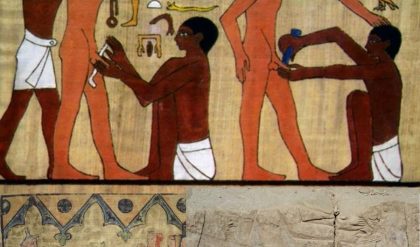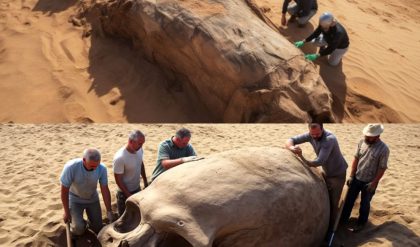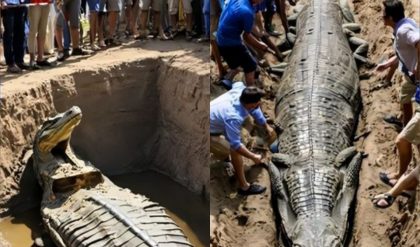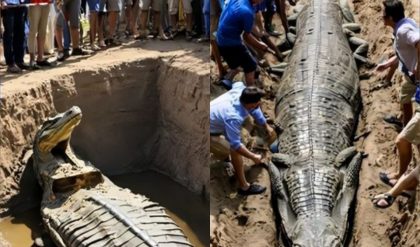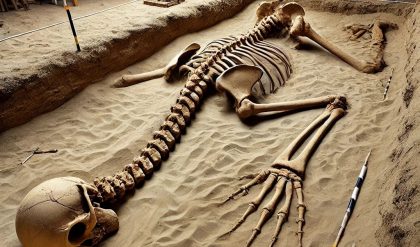The catastrophic eruption of Mount Vesuvius in 79 AD is one of history’s most dramatic natural disasters, forever preserving the Roman city of Pompeii under a thick blanket of volcanic ash. Among the most haunting legacies of this disaster are the so-called ‘petrified bodies’ of Pompeii’s victims. For centuries, these skeletal remains have been the subject of myths and misconceptions, often romanticized or sensationalized in popular culture. However, recent archaeological research has shed new light on these remarkable remnants, clarifying the true nature of the preservation process and dispelling long-standing myths.
Understanding the Preservation of Pompeii’s Victims
The bodies found in Pompeii were initially thought to be “petrified,” a term that suggests they were turned to stone. This impression was largely influenced by early excavation methods and a lack of understanding about the preservation process. However, modern science has revealed a much more nuanced picture.

The Role of Volcanic Ash: The preservation of the Pompeian bodies is due to the unique conditions created by the eruption of Vesuvius. The city was buried under a deep layer of volcanic ash and pumice, which created a protective seal around the remains. As the organic materials of the bodies decomposed, they left voids in the ash layer. These voids were later filled with plaster during excavation to create the detailed casts we see today.
Creating the Casts: Early archaeologists, including Giuseppe Fiorelli in the 19th century, used plaster to fill the cavities left by the decayed bodies. This method captured the exact position and posture of the victims at the moment of their death. The plaster casts are not the actual remains but a detailed impression of their final moments.
Dispelling Common Myths
Several myths have circulated about the so-called petrified bodies of Pompeii. Let’s address some of the most prevalent misconceptions:
Myth: The Bodies Are Petrified in the Traditional Sense.
- Fact: The bodies were not turned into stone. Instead, the preservation is a result of the volcanic ash creating molds around the decomposed remains. The term ‘petrified’ is a misnomer; the actual process involved the formation of plaster casts, not mineralization.
Myth: The Victims Died Instantly from Lava.
- Fact: The majority of Pompeii’s victims did not die from lava but from the pyroclastic surges—a deadly combination of hot gases, ash, and volcanic debris that swept through the city. These surges could reach temperatures of up to 1,000 degrees Fahrenheit (500 degrees Celsius), causing rapid and fatal thermal shock.
Myth: The Bodies Were Preserved in Perfect Condition.
- Fact: Many bodies were in various states of decay before the plaster casts were made. The preservation of soft tissues was minimal, and the casts primarily provide a detailed view of the skeletal structure and the positions of the bodies rather than complete anatomical preservation.
New Discoveries and Research
Recent advancements in archaeological techniques have provided deeper insights into the lives and deaths of Pompeii’s inhabitants.
Advanced Imaging Techniques: Modern methods such as CT scanning and 3D imaging have allowed researchers to study the casts in unprecedented detail. These technologies have revealed additional information about the health, diet, and even the causes of death of Pompeii’s residents.
Ongoing Excavations: New excavations and research continue to uncover additional details about the final moments of Pompeii’s victims. For example, recent finds include evidence of the victims’ last-minute attempts to escape or protect themselves, providing a poignant glimpse into their final hours.
The Cultural Impact of Pompeii’s Preservation
The casts of Pompeii’s victims have become iconic symbols of the city’s tragic fate. They serve as powerful reminders of the human cost of natural disasters and offer a window into the past. However, it is essential to approach these relics with a clear understanding of their scientific context.
Educational Value: The casts provide invaluable information for historians and archaeologists, helping to reconstruct the events of the eruption and the daily lives of the people of Pompeii. They also serve as educational tools, illustrating the impact of volcanic activity on ancient civilizations.
Respect for the Dead: As research continues, it is important to handle these artifacts with respect and sensitivity. The people of Pompeii were real individuals with lives and families, and their remains should be treated with the dignity they deserve.
Conclusion: A Clearer Picture of Pompeii’s Past
The true story behind the so-called petrified bodies of Pompeii is a testament to the incredible preservation power of natural events and the ingenuity of early archaeologists. By dispelling myths and embracing the facts, we gain a clearer understanding of the disaster that struck Pompeii and the lives of those who lived through it.
As research progresses, our knowledge of Pompeii will continue to evolve, offering even more insights into one of history’s most fascinating archaeological sites. The plaster casts, while not the bodies themselves, remain a crucial link to the past, bridging the gap between ancient and modern understanding.

